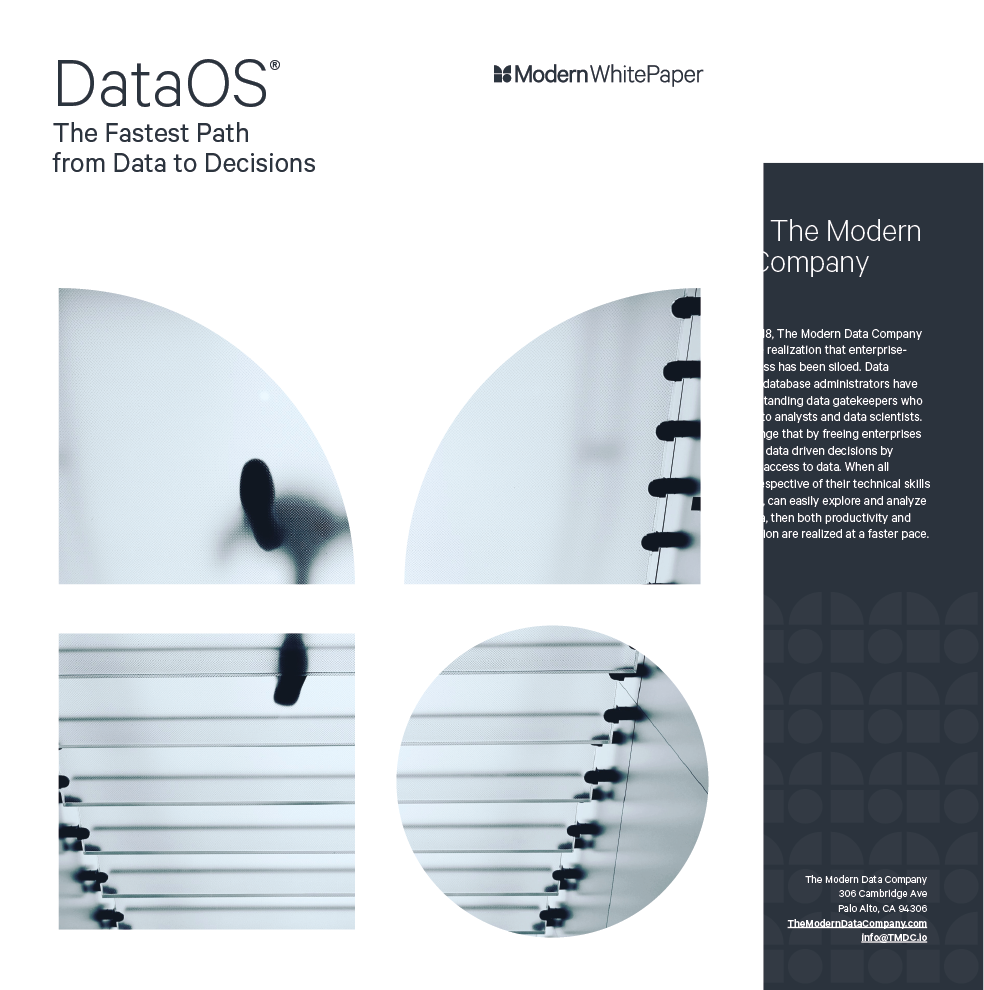
How to drive trusted decisions without changing your current data infrastructure.
Learn more about DataOS® in our white paper.
Imagine losing billions of dollars each year simply because of a lack of visibility. This is a reality for distribution and supply chain organizations thanks to incomplete shipment data. In an industry already running on the thinnest margin, industry leaders are keen to plug drains on their bottom line and improve inefficient processes.
However, industry leaders won’t be able to realize those goals without one vital component: data sharing. Although it’s in everyone’s best interest to share, some obstacles present challenges to the free flow of vital data. Let’s explore what stands in the way of unlocking data and how distribution and supply chain leaders can facilitate a shift to data sharing.
Past data collection included data lodged in silos from multiple sources and formats. Much of this collection included varying manual processes from pulling reports to sending email requests. This methodology created conditions for flawed insights based on outdated, incorrect, or missing data.
Today, sensor-based trackers are simplifying and automating data collection. They can provide real-time feedback on location and conditions for shipments, flag for potential issues, and help everyone down the supply chain better manage the process. However, there are two downsides to all this new data:
Together, these obstacles prevent a clear picture of what’s happening along the supply chain from forming. Even if data comes in real-time, no one can pivot quickly based on incomplete data. If supply chain leaders can connect these pieces through a comprehensive data platform, these multiple data streams become far more useful together.
Once leaders unite data sources, they need to distribute this data to the right people. A modern supply chain can’t wait for top-down insights. Instead, using cloud or hybrid tools, leaders can quickly push relevant data to team members on the ground for rapid response.
This requires a tool that can operate in multiple environments—hybrid, cloud, multi-cloud, and even on-premise. Enterprises may have many different data environments that need connection, so the data platform should accommodate those needs.
This collaboration also requires deep integration capabilities. A data platform should allow leaders to share data with partners and other organizations involved in their supply chain to complete the data picture. Where fragmented, proprietary data silos used to be the norm, companies must shift to an open flow of data while balancing security and privacy.
This is a significant obstacle. Companies require a feasible governance model that operates enterprise-wide as third and even fourth-party data come into play. Even more, they need something that will scale and adapt as the supply chain evolves.
Data sharing allows companies greater precision in setting smart timelines and plans and managing all resources. Companies might be able to reduce unnecessary inventory, for example. In other cases, data sharing allows everyone along the supply chain to predict and prepare for things like seasonal items or global disruptions like the pandemic.
Data sharing also helps mitigate the natural risks of moving goods through the supply chain. Operators can use shared data to monitor the conditions of shipments to ensure goods arrive unspoiled. The more data is shared and available, the better everyone along the supply chain can identify potential threats and either adjust to avoid them or notify customers of the delay with more specific timelines.
A data operating system is the key to creating the conditions that make data sharing worth it. Some of the features of a data operating system include:
DataOS offers a next-generation data platform designed to integrate existing tools and operate under multiple hosting configurations. It’s designed for business use with prebuilt algorithms and a right-to-left approach to data production. Essentially, business users can search for data using a search engine-like program and run queries without knowing code. For more technical users, a command-line interface is available.
Companies can approach governance using a revolutionary approach, as well. DataOS uses tag-based permissions to grant access to data. This prevents mistakes and delays in granting permission to use certain tables. Businesses can grant approval across the board based on user attributes, freeing up data for real-time use.
As data sharing becomes more common, DataOS provides the necessary capabilities to ingest data, collaborate, and scale. It takes data-driven decisionmaking to the next level and enables supply chain and distribution leaders to harness a complete, transparent view of data.
Be the first to know about the latest insights from Modern.

The elegance of Data Products is undeniable, but many leaders question the efficacy of their data strategies: Why does the return on data investments often disappoint? Why is proving data's value becoming harder? Why do data models become more cumbersome than...

Data is vital to business but the process of getting from data to insights is often murky. Many on the business side may not even care how it happens but understanding this process matters. It matters a lot. With this in mind, let's explore how to demystify the...

We don't want to restrict the scope of this article to only data leaders and influential executives. As startup folks, we are confident in how individual contributors or ICs, such as Data Engineers, DevOps experts, or even the surprising intern, could influence the...

It's a tale as old as time. A startup manages to disrupt an entire industry only to find itself at a critical juncture a few years down the road. Data, the lifeblood of its operations, was becoming increasingly complex and unwieldy. With each new product launch and...

For today's Chief Data Officers (CDOs) and data teams, the struggle is real. We're drowning in data yet thirsting for actionable insights. Traditional data architectures, with their centralized data lakes and batch-oriented processing, are like bloated, slow-moving...
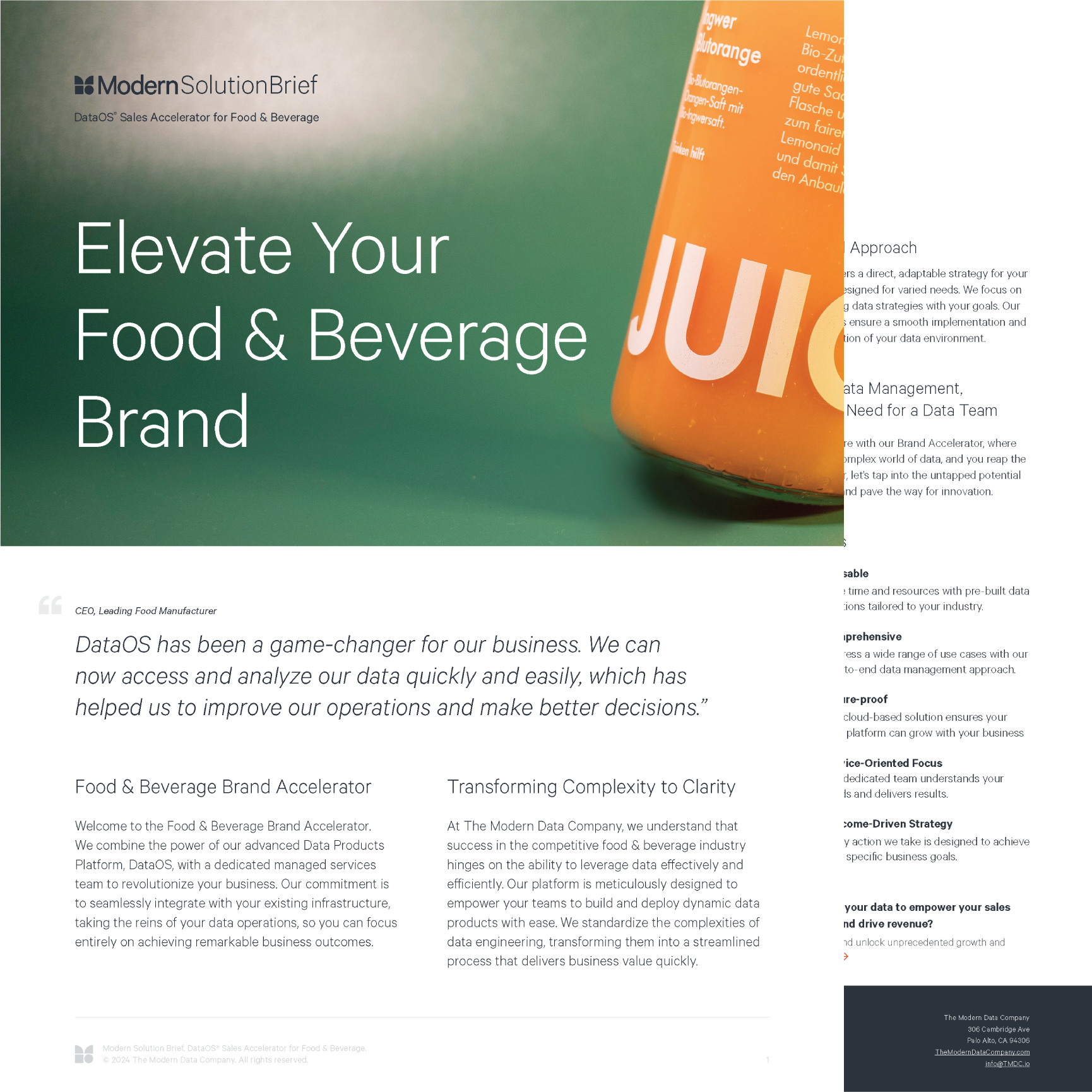
DataOS Sales Accelerator for Food & Beverage The dynamic food & beverage industry demands a data-driven approach to success. The Modern Data Company's DataOS® Sales Accelerator acts as your all-in-one data concierge. Our pre-built solutions, designed...
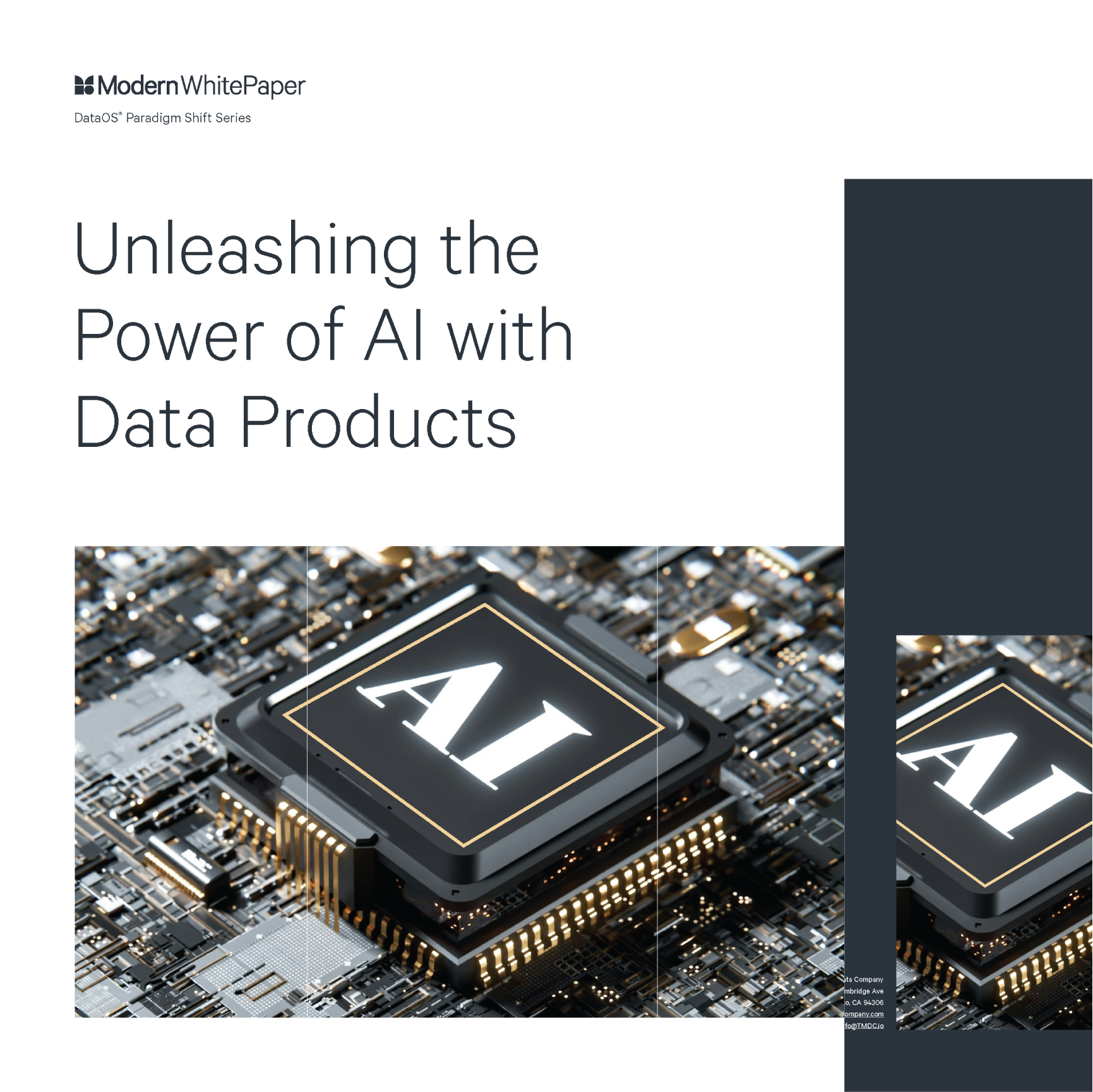
Unleashing the Power of AI with Data Products Traditional project-centric data management stifles AI innovation with siloed data, slow workflows, and limited reusability. Enter the era of data products: self-contained modules of data, logic, and infrastructure that...
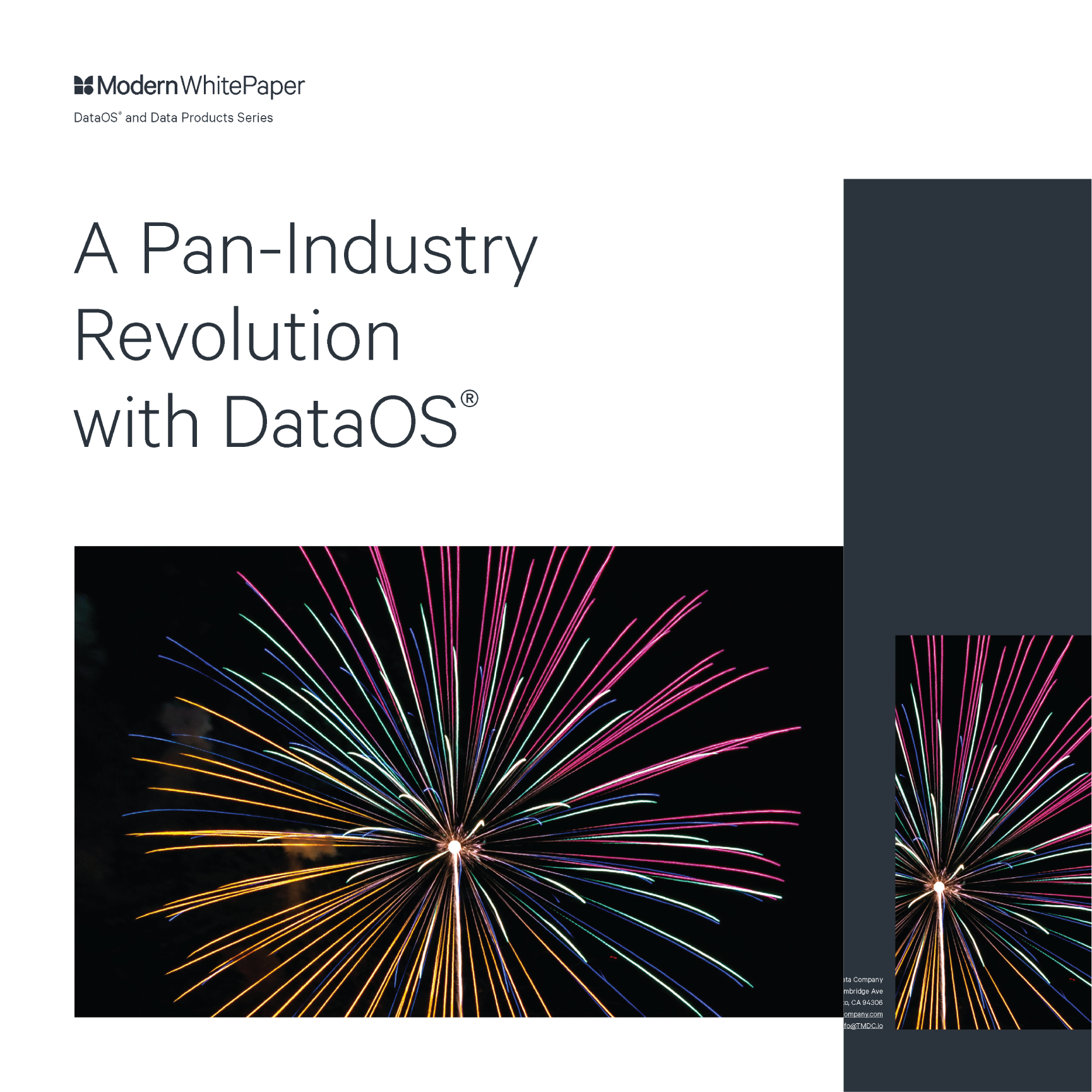
A Pan-Industry Revolution with DataOS® Unleash the revolution with Data Products powered by DataOS®. These self-contained data units, bursting with actionable insights, offer unmatched flexibility, agility, and compliance across all sectors. From personalized customer...

Cross-Sell Accelerator for Credit Cards In the hyper-competitive BFSI landscape, maximize credit card cross-sell potential with data-driven precision. Cross-Sell Accelerator empowers you to forge deeper customer connections with personalized offers, optimize...
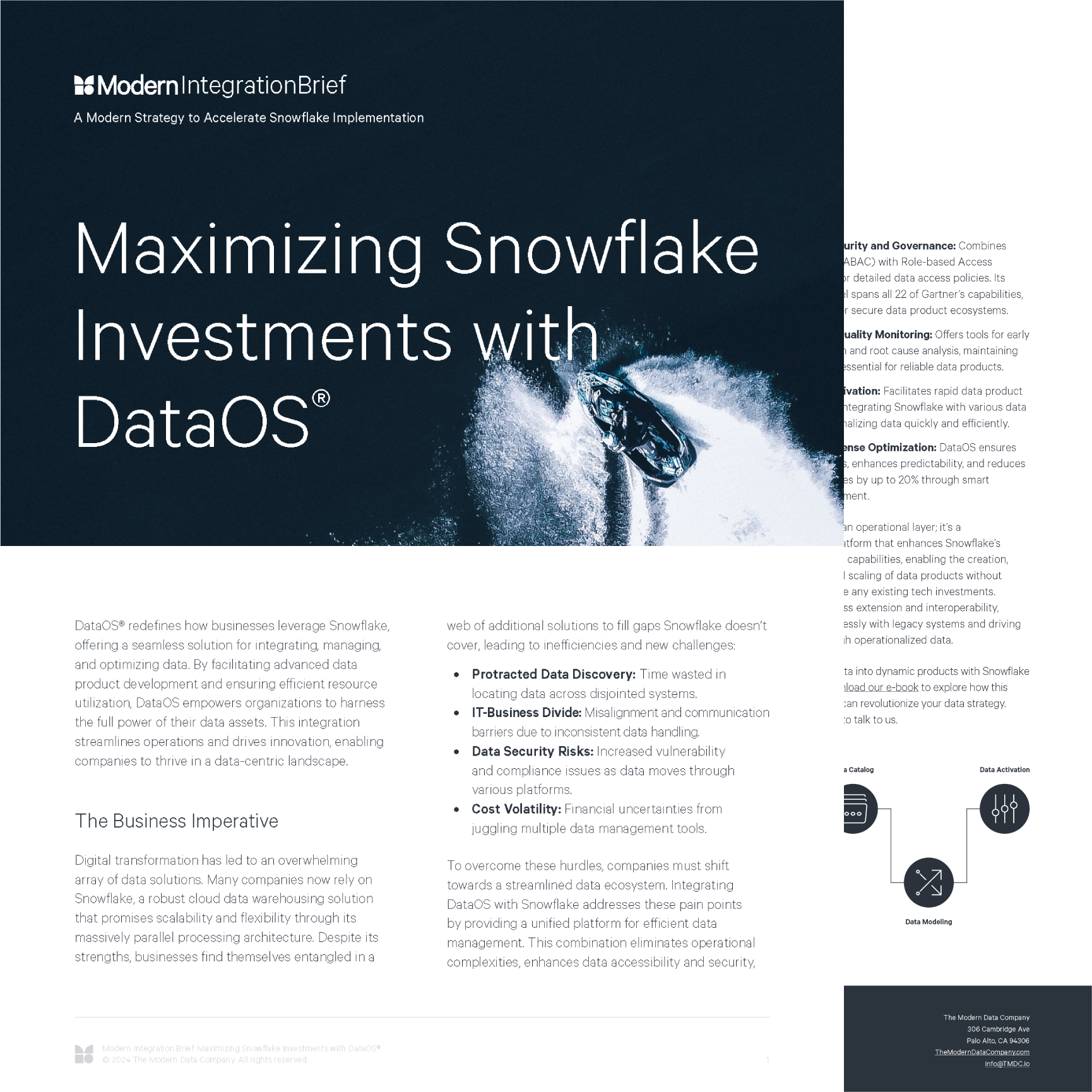
Maximizing Snowflake Investments with DataOSUnleash the true potential of your Snowflake investment with DataOS®, the data product platform that seamlessly integrates, empowers, and elevates your existing infrastructure. Build robust data products faster, eliminate...